
Table of Contents
The forehead, or third eye, piercing is also called the ‘bindi’ piercing as it closely resemblance the bindi (a facial embellishment) worn by many women in certain Asian countries. It’s a highly popular cosmic-inspired piercing that’s quite the trend nowadays as it adds a glow to the face and has the ability to make the wearer look simply gorgeous.
If you’re interested in getting a forehead piercing and would like to know all about it, we’ve got you covered. We’ve got all the information that you need to know on this piercing to help you figure out it’s right for you.
What is a Forehead Piercing?

The third eye piercing is a vertical piercing that lies just between the eyebrows. It’s a surface piercing in which two perforations are created on the same skin plane with boht ends of the jewelry visible.
A microdermal third eye piercing is a variation which includes one perforation, with one end of the jewelry visible, while the other is set just under the skin, held in place by a microdermal anchor, quite similar to the wrist piercing. This piercing is generally performed using a dermal punch and the jewelry can’t be changed unless it is completely removed.
Origin and History of the Forehead Piercing
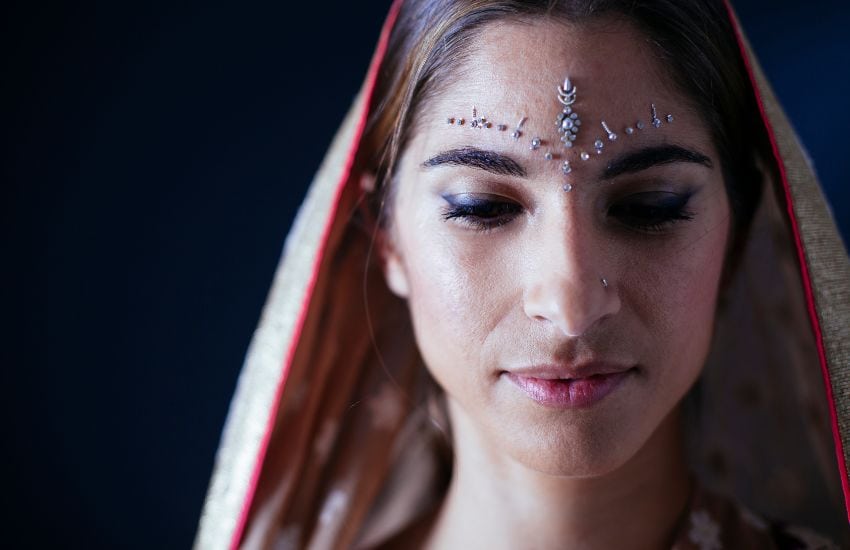
Forehead piercings, also known as “third eye piercings” or “bindi piercings,” have deep ties to spiritual and cultural traditions. In Hindu culture, people traditionally wear a bindi, a colored dot (often red), between the eyebrows.
This bindi represents the third eye, a symbol of intuition and spiritual insight. Even though the classic bindi isn’t a piercing, its spiritual and fashionable role paved the way for modern forehead piercings.
Forehead piercings made their mark in Western culture mainly in the late 20th century when body modifications became more popular. Like many other piercings, people got them as a way to express themselves, often taking inspiration from tribal, indigenous, and Eastern cultures. Piercing the forehead, especially because of its prominent location and the thin skin over the bone, needs a skilled hand to avoid problems.
Nowadays, while you don’t see forehead piercings as often as other facial piercings, they still make a strong statement in the world of body art. They mix cultural respect, spirituality, and personal style. Anyone thinking of getting this piercing should take the time to learn about its cultural background and consider the medical and social aspects.
How is the Forehead Piercing Done?
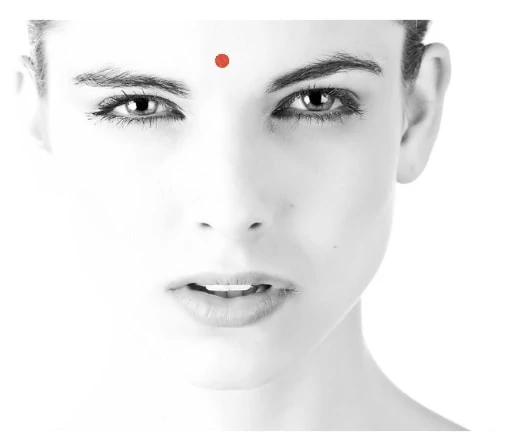
Before you choose the piercing studio, do some research and make sure that you find a piercer who has considerable years of experience in bridge piercings as the third eye piercing is also a type of bridge piercing.
The placement of this piercing should be precisely at the center of the forehead. If there’s even the slightest movement, it can affect the symmetry of your face, so you need to make sure that you choose a professional piercer who is well-established with years of expertise.
Before the procedure, the piercing artist will examine your forehead, clean the area with an antiseptic solution and then mark the spot using a surgical pen. After the spot is marked, the piercer will pinch your skin and pierce it with a hollow needle to create a piercing channel.
The jewelry will then be quickly inserted and the needle is taken out. Your piercer will then give the piercing a quick wipe with an antiseptic solution and that’s it! It takes all of a few seconds and you’re ready to go!
What are the Best Jewelry Types for Forehead Piercings?
Unfortunately, there are limited jewelry options for forehead piercing. Surface bars and curved barbells are the most suitable types of jewelry for the third eye piercing, especially during the healing phase.
We advise staying away from other types of jewelry such as ball closure rings for example as they can exert too much pressure on the piercing. This piercing is highly prone to rejection and migration and if your body rejects it, it’s likely to leave a scar right there in the middle of your forehead. To avoid this from happening, choose your jewelry carefully.
1. Surface Bars
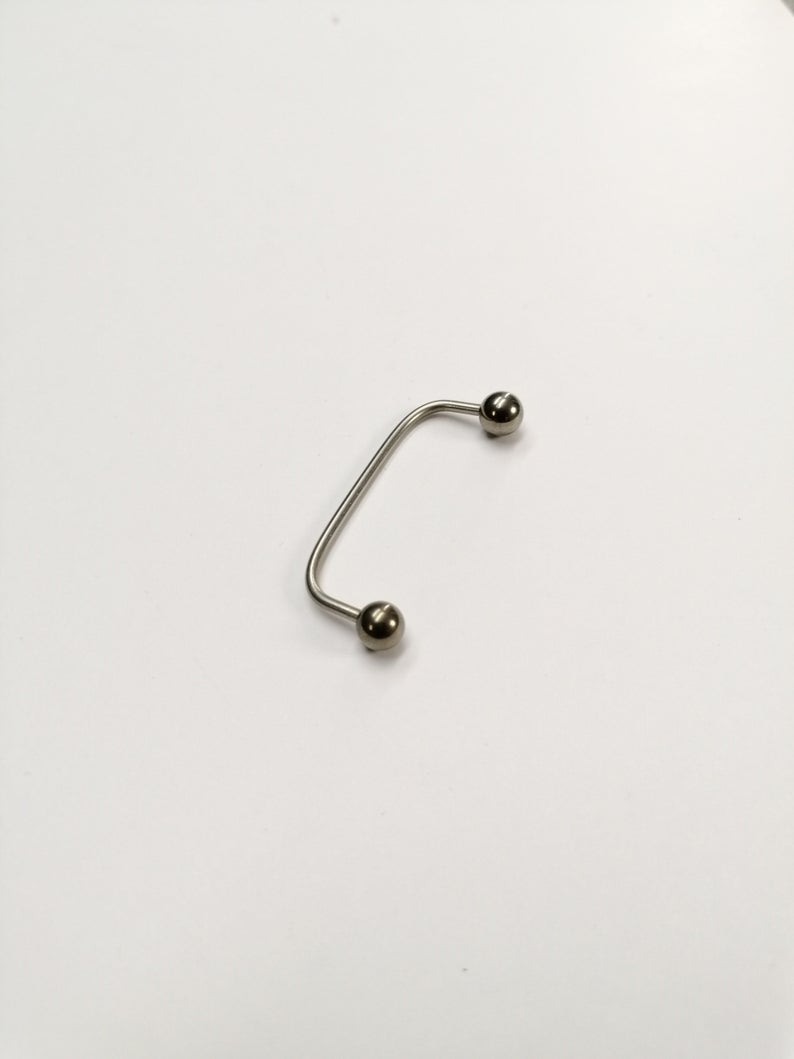
Surface bars are perfect for piercings like this one as they don’t exert pressure on the piercing at all, minimizing the risk of rejection and migration. You can find these in different designs, ranging from simple and basic to elaborate and intricate and the balls come in all kinds of colors and patterns.
2. Curved Barbells
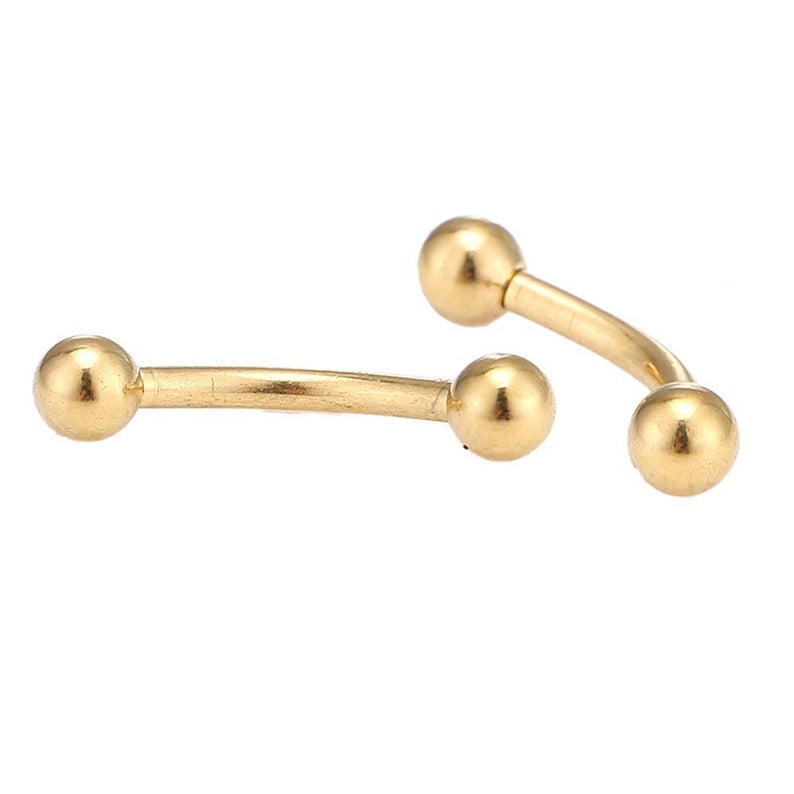
Curved barbells are simple but charming and come in many different styles and colors. If you want something that looks more interesting and unique than just the plain curved barbell, you can go for one with spikes, diamonds, or whatever looks good for you.
When choosing your jewelry, make sure you go for a metal that’s biocompatible and hypoallergenic especially if you’re someone with sensitive skin. The best metal for the initial jewelry would be PTFE (commonly known as Teflon). Teflon is a non-stick material and jewelry made from Teflon cause less friction in the piercing.
Other metals you can go for are high-karat gold, fine silver, titanium, surgical stainless steel, and platinum. Don’t run the risk of infections or allergies by choosing non-bio-compatible materials as these can cause infection and complications.
3. Dermal Anchors or Microdermals
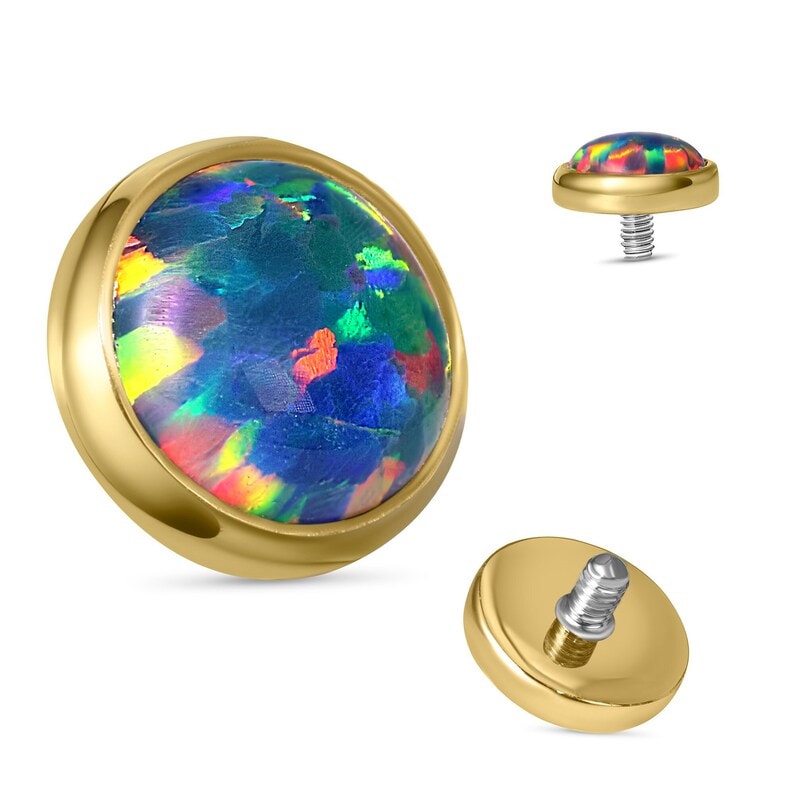
Instead of a traditional piercing that goes in and out of the skin, a dermal anchor involves embedding a base (the anchor) into the dermal layer of the skin, allowing a decorative top to be screwed on. It results in a single-point piercing, and for the forehead, it often resembles the appearance of a bindi.
Forehead Piercing Pain and Aftercare
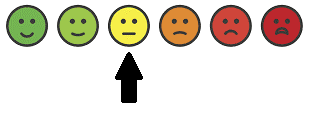
This piercing ranks fairly low on the pain scale compared to most other types of piercings and most people claim that they ‘hardly felt a thing’. However, pain is a subjective experience and everyone’s pain threshold is different. While we can’t say for sure how much pain you would feel, it’s safe to say that it won’t be unbearable and you will most likely be able to handle it.
The forehead piercing can take anywhere from 4 to 6 weeks to heal completely but you can help speed up the process by following the aftercare tips given to you by your piercer. Taking good care of your piercing can have an impact on the healing time. Proper care can also reduce the risk of jewelry migration and rejection so follow these rules carefully.
- Don’t touch the piercing – avoid touching the piercing as much as you can since your hands may carry germs that can cause infection. Avoid playing around with the jewelry as it can irritate it and impede the healing process.
- Clean the piercing twice a day – make sure you clean the piercing with warm salt water or saline solution at least twice a day as this will speed up the healing process and minimize the risk of infection. Once you’ve washed it, dry it carefully using ONLY a paper towel. Don’t use pieces of cloth of towels that have been lying around the house as these may not be clean enough to clean your piercing with.
- Avoid swimming until it heals – stay away from swimming pools, lakes or any public swimming places until the piercing heals completely. You never know what’s in those waters and the last thing you need is to get your piercing inflamed and infected.
- Be extra careful when wearing clothes – whenever you change your clothes, take extra care getting them over your head. Your jewelry can easily snag on the material and can damage the piercing.
- Keep an eye out for migration or rejection – take your jewelry out if you feel that it has shifted position or is moving closer towards the surface. If you leave it in, your body will continue to reject it and this can end up in tissue damage and scarring. Surface piercings are prone to rejection so don’t forget to keep an eye on it.
If you run up a fever or you notice any redness, itchiness, pain, swelling or tenderness around the piercing area, get medical help immediately as these are sure signs of infection. Whatever you do, don’t ignore it and wait for it to go away as it will only get worse.
What are the Pros and Cons of the Forehead Piercing?
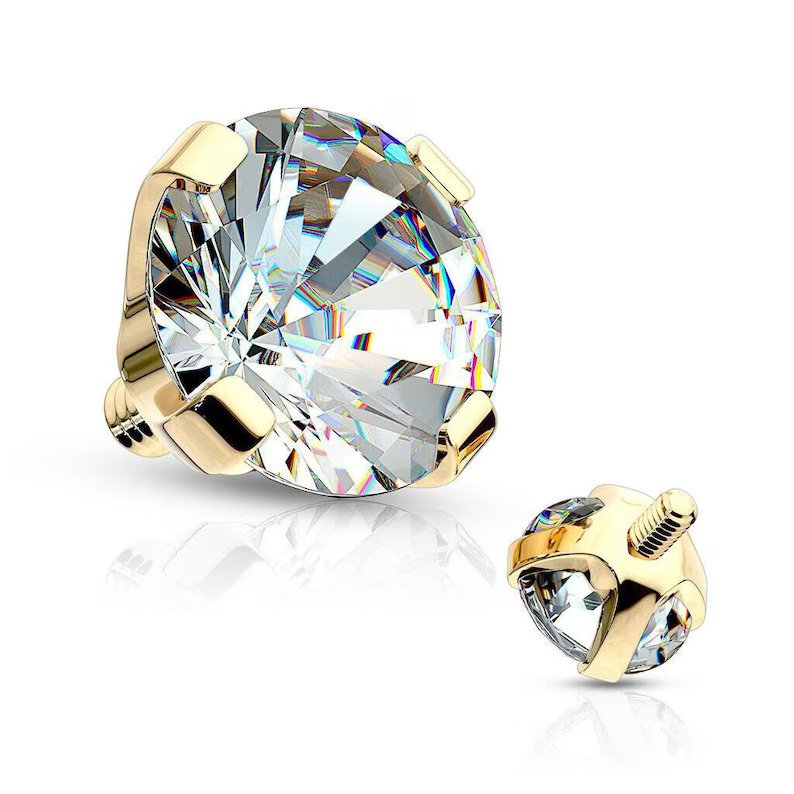
If you’re on the fence about getting a third eye piercing, let’s have a look at the pros and cons of it as this may help you to make your decision.
Forehead Piercing Pros
- It’s an uncommon piercing that stands out
- It’s less painful than most other piercings
- It makes a statement about your style and personality
- It can be minimal and barely there, or loud and attention-getting based on your style
Forehead Piercing Cons
- It’s not easy to hide this as it’s smack dab in the middle of your forehead
- There are limited jewelry options for this piercing
- It can easily snag on your clothing or hair
- The risk of rejection and migration is high
What Does the Forehead Piercing Mean?

The third eye piercing is interpreted in various ways depending on the country and the religious tradition that it’s being used for. In Hinduism, Buddhism and Jainism, bindis placed in between the eyebrows are believed to be the centre of the universe.
The third eye is also symbolic of enlightenment, clairvoyance and deep spiritual knowledge, which is why it’s popular among yoga practitioners. Even in popular Western culture, the third eye denotes psychic abilities and spiritual peace. With the piercing in that location, it evokes this symbolism of intuition and knowledge.
Some people believe that getting a third eye piercing would be cultural appropriation but the piercing (unlike the bindi) doesn’t belong to any one culture.
Wrapping Up
Forehead piercings hold deep cultural and spiritual meaning and have found a special place in today’s body art world. They connect us to old traditions while letting us show our unique style. If you’re thinking about getting one, it’s important to know its history and pick the right jewelry.
We love the third eye piercing because it’s unique, stylish and bold. What do you think?









